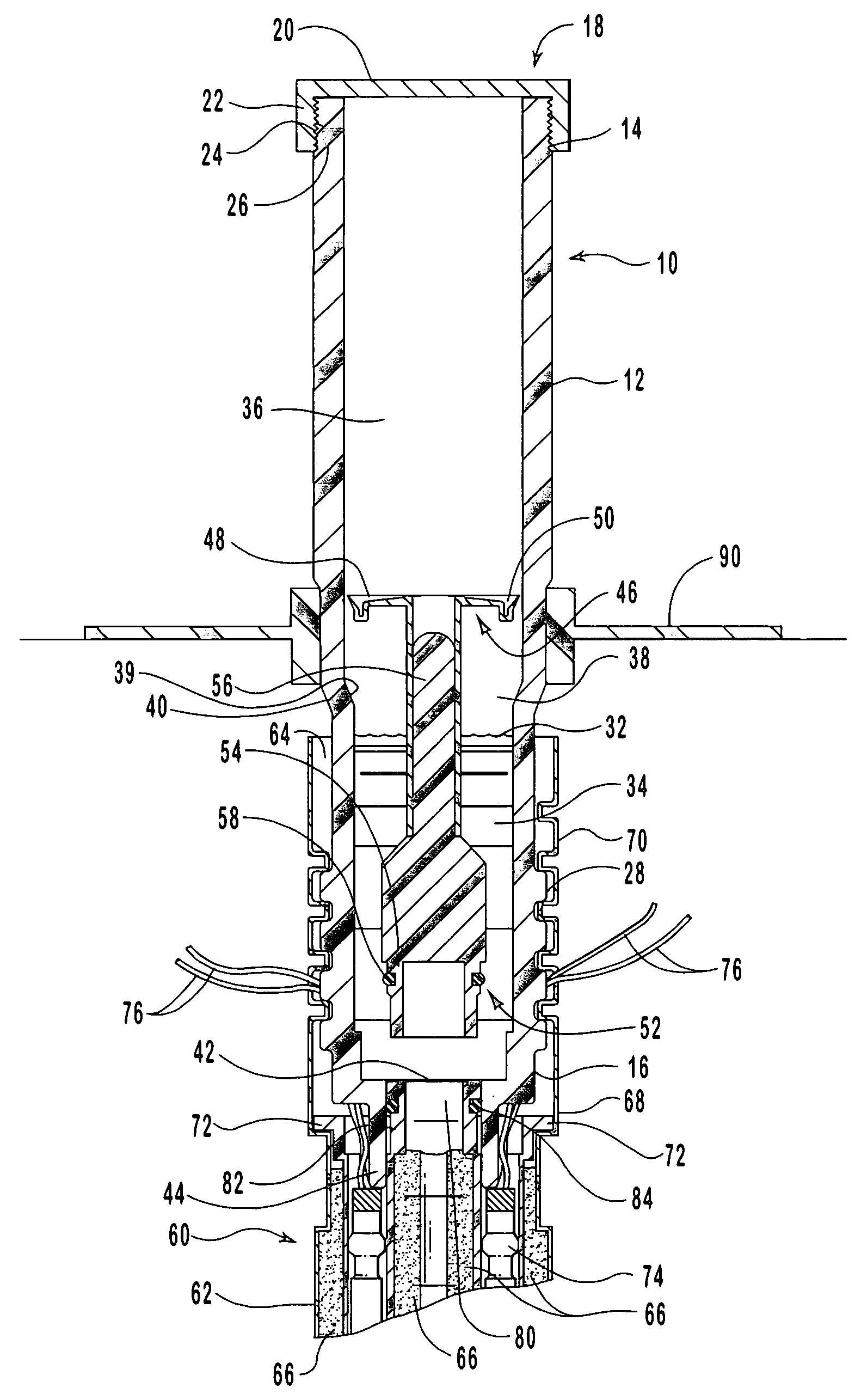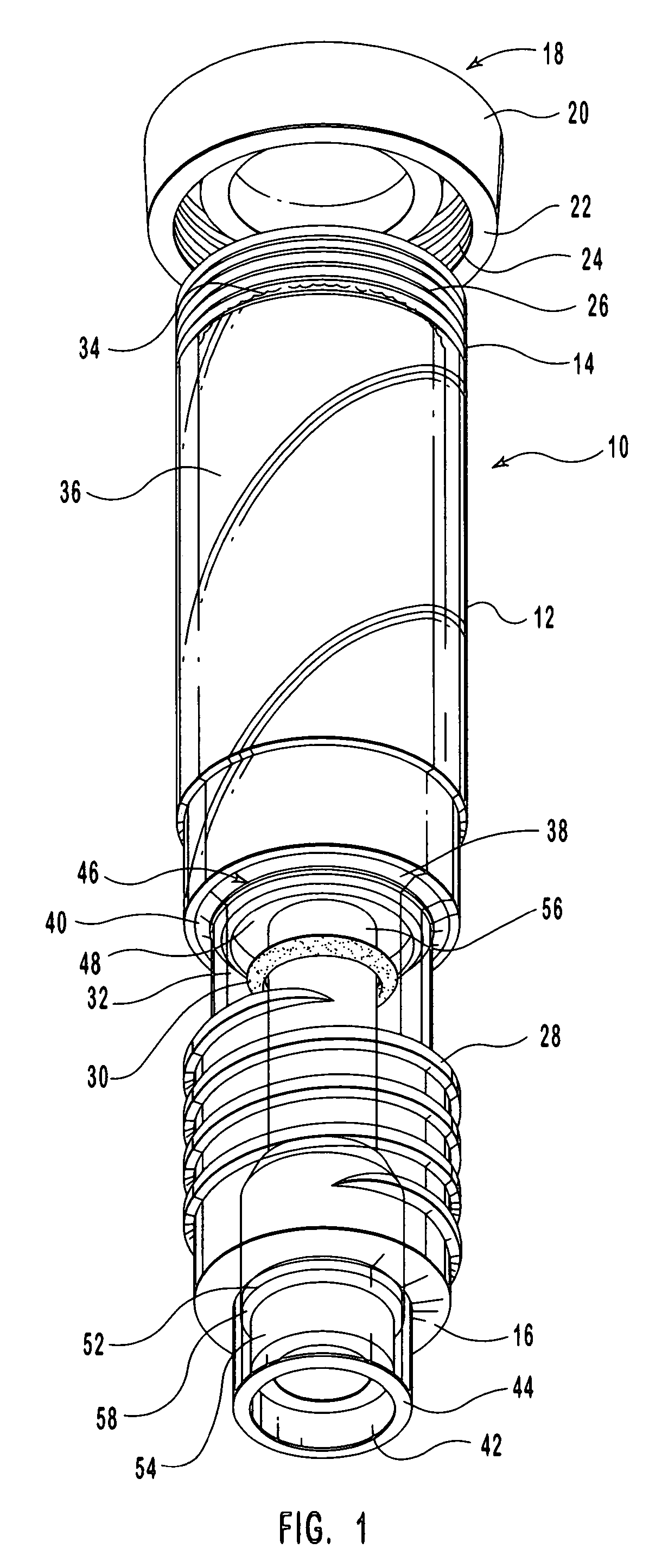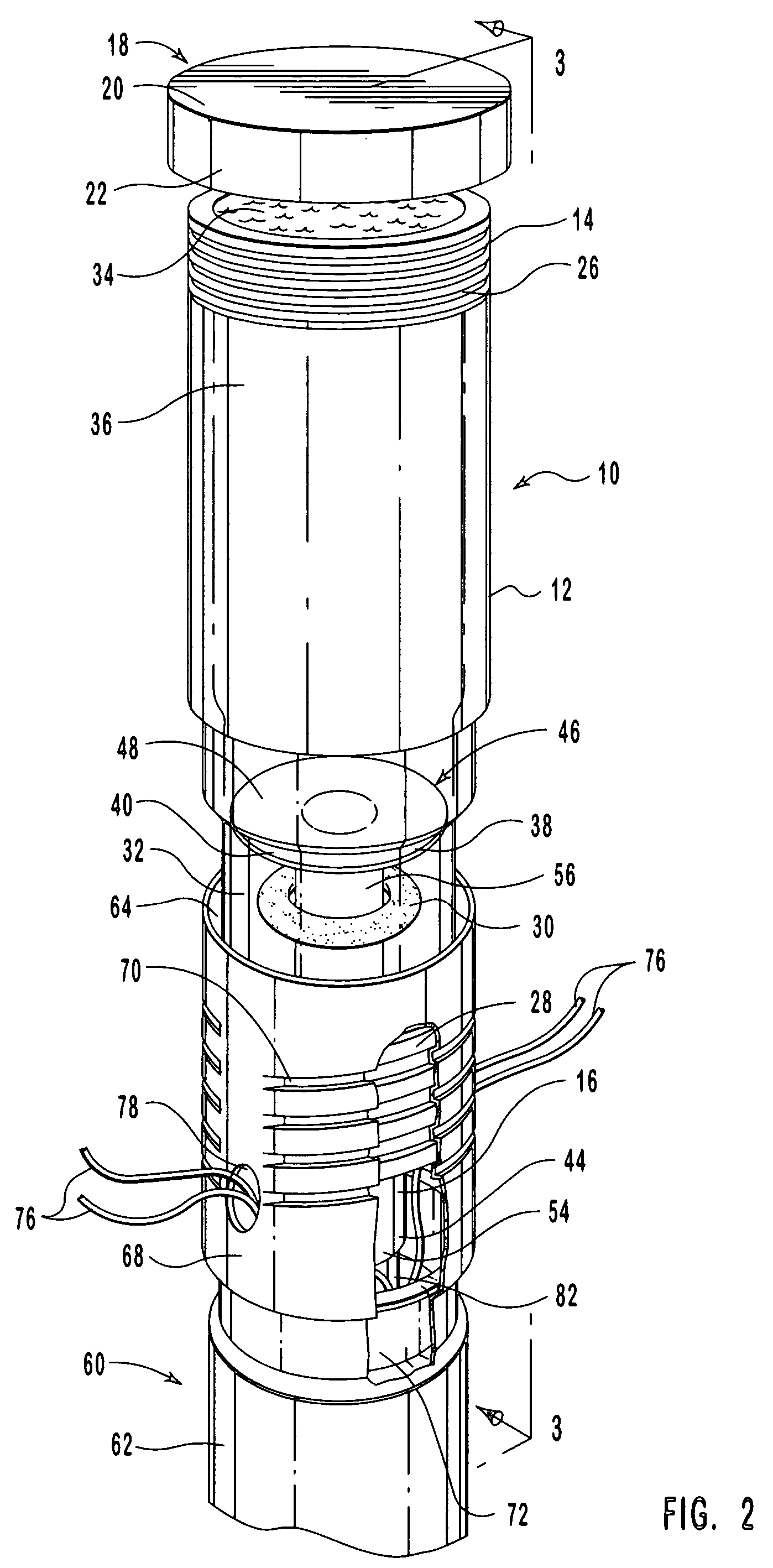Method for bioremediating undetonated explosive device
a bioremediation and undetonated technology, applied in the field of explosives remediation, can solve the problems of substantial property damage and consequential losses, inadvertent detonation of explosive charges, and inherently dangerous charges
- Summary
- Abstract
- Description
- Claims
- Application Information
AI Technical Summary
Benefits of technology
Problems solved by technology
Method used
Image
Examples
example 1
[0141]Quantities of the explosive materials TNT and PETN in water were combined with the suspension of the microorganism consortium. The resulting mixture initially included 47.23 parts per million (ppm) of PETN and 40.63 ppm of TNT. The mixture was divided among containers that were stored in aerobic conditions at ambient temperature for various time periods. Table 1 below indicates the explosive analysis of these samples after each designated time interval. The explosive materials were substantially degraded after a period of five weeks.
[0142]
TABLE 1Aerobic Bioremediation of TNT and PETNExplosiveAnalysis AfterAnalysis AfterMaterialInitial Analysis3 Days5 WeeksPETN47.23 ppm40.94 ppm7.25 ppmTNT40.63 ppm 5.32 ppm0.62 ppm
example 2
[0143]The mixture prepared in Example 1 was stored in anaerobic conditions at ambient temperature and observed. The results were determined by HPLC analysis in ppm and averaged. Table 2 below sets forth the results obtained. As can be seen by comparing the results in Table 2 with the results in Table 1, the explosive materials tested remediated more rapidly under anaerobic conditions than under aerobic conditions.
[0144]
TABLE 2Anaerobic Bioremediation of PETN and TNTExplosiveInitialAnalysis afterAnalysis afterAnalysis after 5MaterialAnalysis3 Days1 WeekWeeksPETN47.23 ppm28.31 ppm24.46 ppm0.82 ppmTNT40.63 ppm 0.31 ppm avg. 0.31 ppm avg.None
example 3
[0145]Discs of the explosive material Pentolite having a diameter of a pencil were split in two. When the discs were split each weighed about 0.1 gram. The discs were placed either in water as a control or in 6 ml to 8 ml of a suspension of the microorganism consortium. After a specific amount of time in aerobic conditions, the discs were dried and weighed or analyzed by HPLC. The liquid portions were analyzed by HPLC. The net remediated weight loss in the explosive material was determined by subtracting the control weight loss as a percentage from the weight loss as a percentage in each remediated explosive. The explosive loss by degradation is listed in Table 3 for each of the samples. The samples in B and C were tested for longer periods of time than the sample in A. The results of the testing of samples B and C show that significant bioremediation did not occur beyond the level achieved in sample A. This was most likely due to insufficient quantities of nutrients in samples B an...
PUM
 Login to View More
Login to View More Abstract
Description
Claims
Application Information
 Login to View More
Login to View More - R&D
- Intellectual Property
- Life Sciences
- Materials
- Tech Scout
- Unparalleled Data Quality
- Higher Quality Content
- 60% Fewer Hallucinations
Browse by: Latest US Patents, China's latest patents, Technical Efficacy Thesaurus, Application Domain, Technology Topic, Popular Technical Reports.
© 2025 PatSnap. All rights reserved.Legal|Privacy policy|Modern Slavery Act Transparency Statement|Sitemap|About US| Contact US: help@patsnap.com



